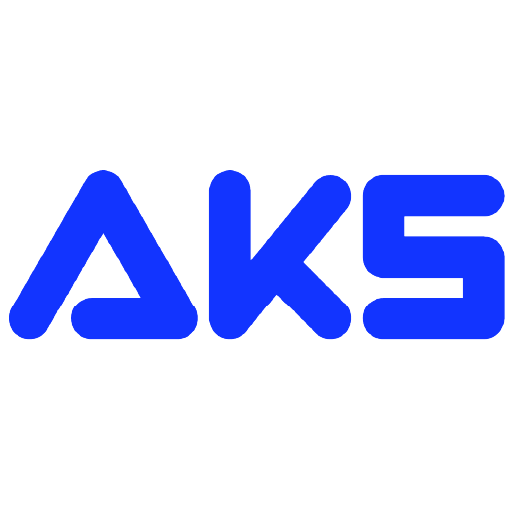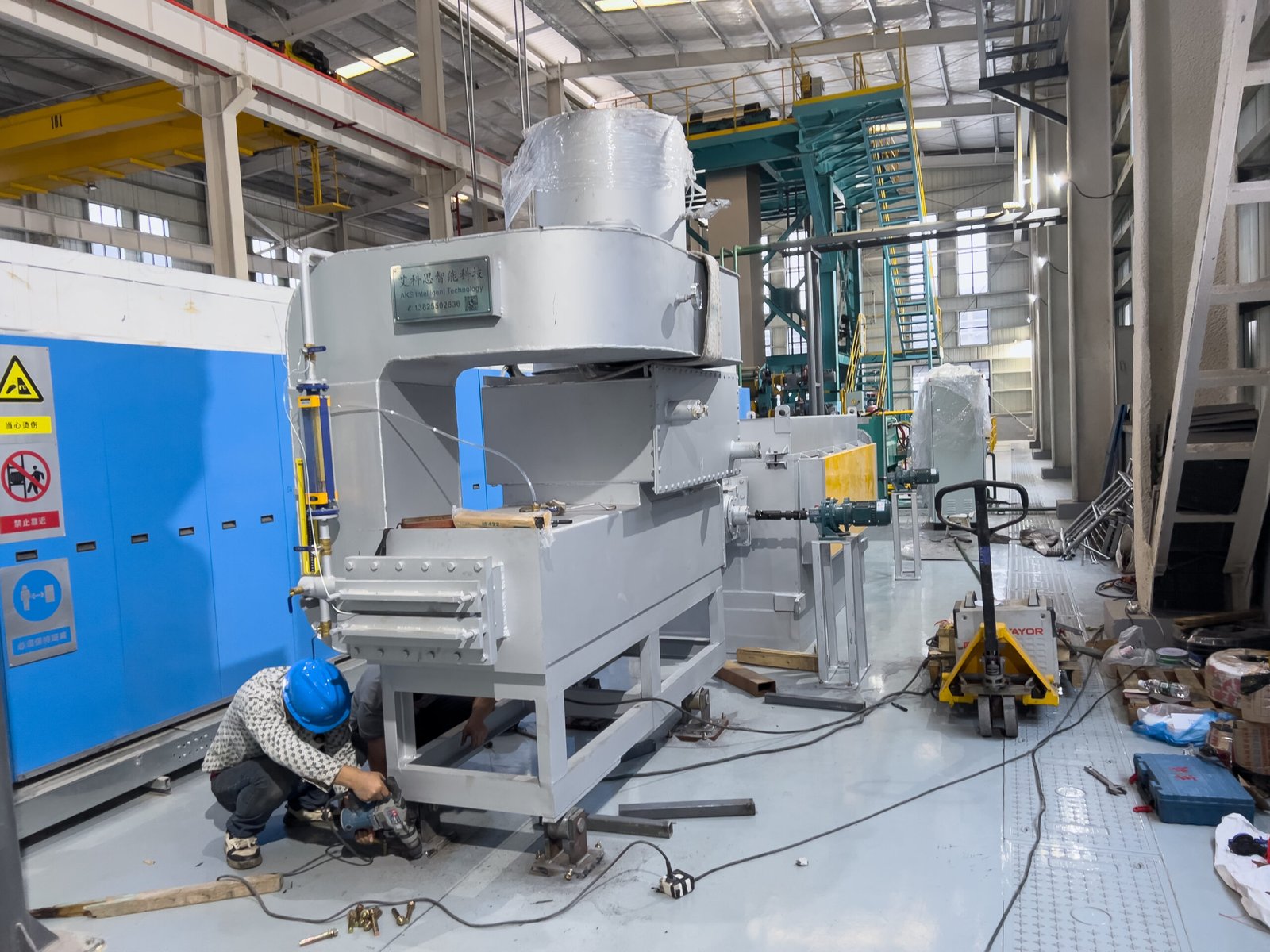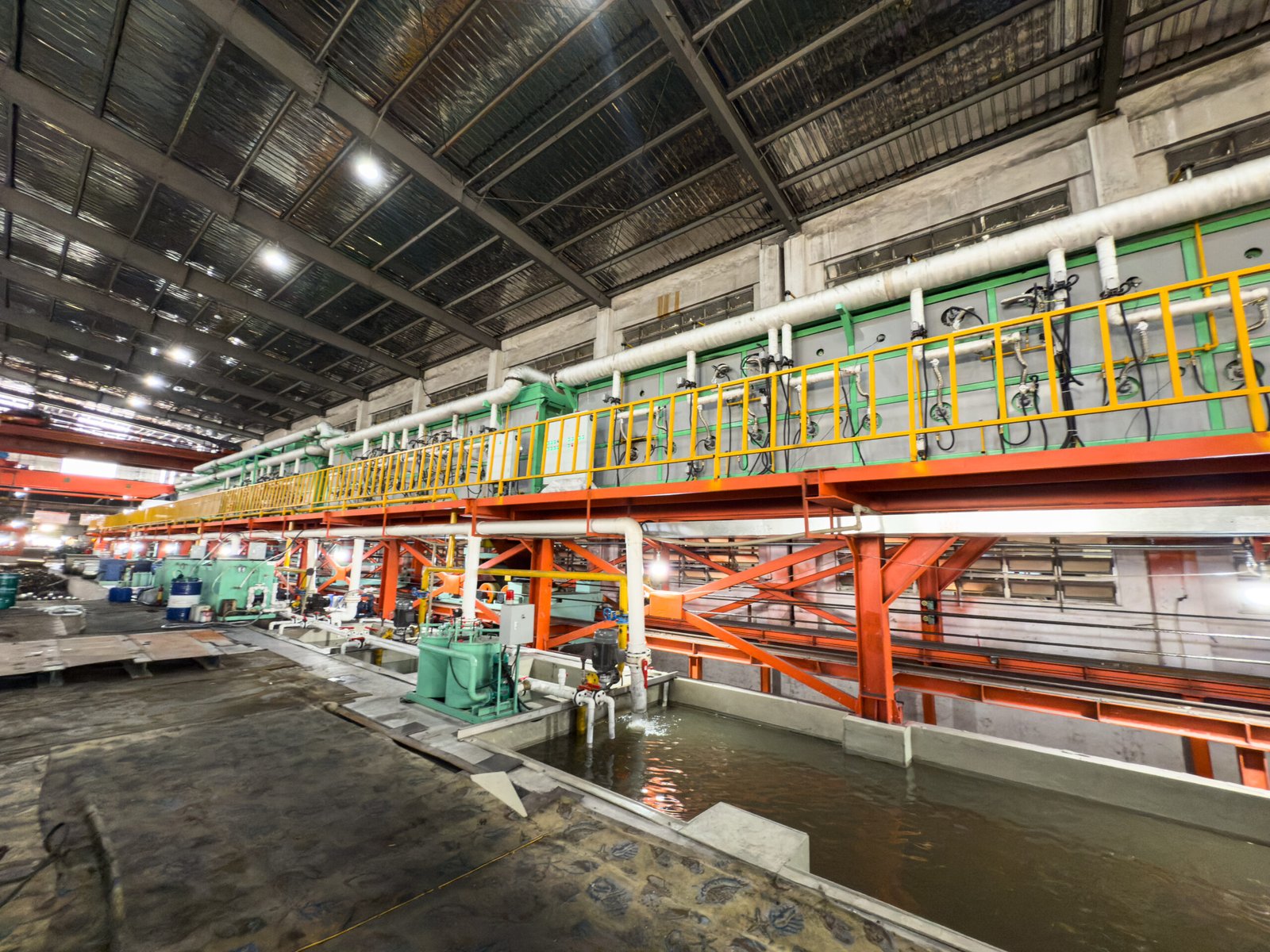How to Prepare a Bright Annealing Stainless Steel Audit Using CQI-9 & AMS 2750 Standards?
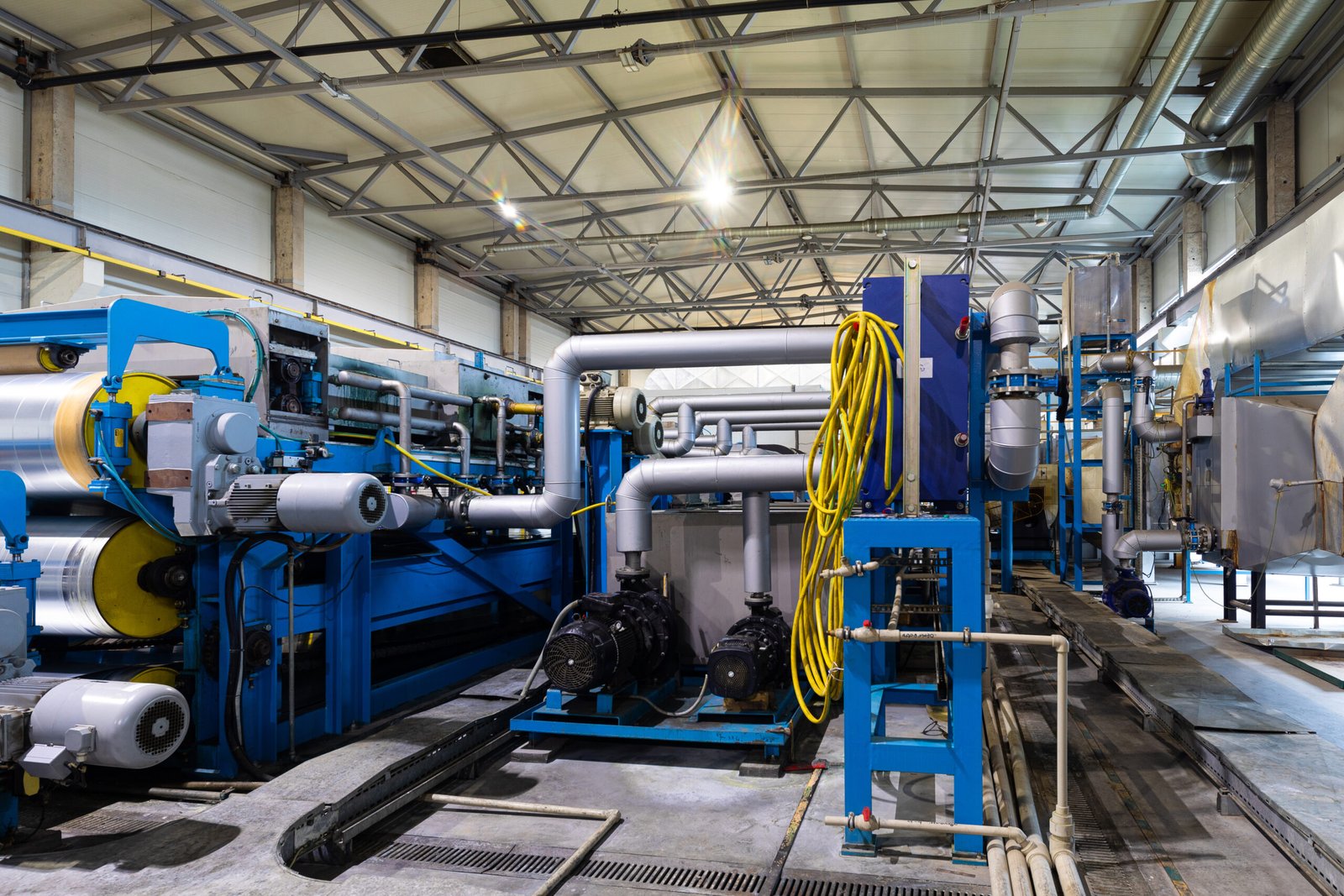
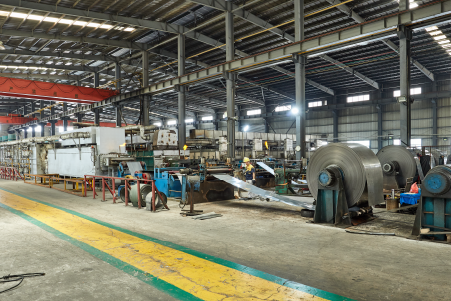
Facing an impending CQI-9 or AMS 2750 audit for your bright annealing line1 can be stressful. You worry that a failed assessment could jeopardize valuable contracts and damage your reputation. The solution lies in a systematic approach that transforms compliance from a hurdle into a habit.
To prepare for a bright annealing audit under CQI-9 and AMS 2750, you must first thoroughly understand the standards, focusing on pyrometry (AMS 2750) and process controls (CQI-9 Process Table H). Then, systematically gather and organize all required documentation, from calibration records to process recipes.
This journey might seem complex, but it’s entirely manageable. Think of it not as a test, but as an opportunity to refine your processes and showcase your commitment to quality. I’ve walked countless clients through this, and I’ll guide you through the same practical steps we use to turn audit anxiety into audit confidence, ensuring you’re not just ready, but truly compliant.
At AKS Furnace, we believe that true quality control is baked into the process, not just inspected at the end. An audit, therefore, is a formal check on a system you should already be living by. These standards, particularly for industries like automotive and aerospace, are not arbitrary rules. They are frameworks designed to ensure thermal processing is precise, repeatable, and reliable. A client in the automotive sector once told me, "Failing an audit isn't just a mark on a report; it's a potential production halt." This highlights the critical nature of integrating these standards into your daily operations, ensuring your equipment, like our bright annealing furnaces, is not just capable but also verifiably compliant.
What are the initial steps to understand CQI-9 & AMS 2750 requirements?
Are you feeling overwhelmed by the dense, technical language in the CQI-9 and AMS 2750 manuals? It's a common problem that leads to misinterpretation and critical gaps in your preparation. The solution is to acquire the official documents and create a dedicated, cross-functional team to dissect them.
The initial steps to understanding these standards involve purchasing the latest versions from AIAG (CQI-9) and SAE (AMS 2750), assembling a team with members from quality, maintenance, and production, and conducting a thorough read-through to identify all applicable requirements for your specific processes.
Transitioning from simply having the documents to truly understanding them is the first major hurdle. Many companies we work with initially assign this task solely to the quality manager, which is a mistake. These standards are holistic; they touch every part of your thermal processing operation. CQI-9 is a "Heat Treat System Assessment," meaning it evaluates maintenance practices, operator training, and management involvement just as much as it does the process parameters. Similarly, AMS 2750 isn’t just about buying calibrated thermocouples; it's about proving the thermal uniformity of your furnace and the accuracy of your entire temperature control system. I remember a client, a stainless steel tube manufacturer, who struggled with their first internal audit. Their quality team understood the paperwork, but their maintenance crew wasn't trained on AMS 2750-compliant thermocouple replacement procedures. This created a disconnect that would have resulted in an immediate non-conformance. By creating a team from day one, you ensure that knowledge is distributed and that every department understands its specific responsibilities in maintaining compliance. This collaborative foundation is essential for building a robust and sustainable quality system that will withstand the scrutiny of any auditor.
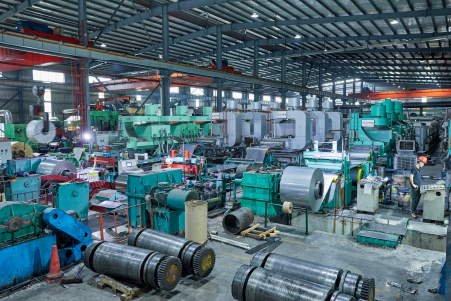
The journey to compliance begins with education. A deep, functional understanding of how these two standards interact is non-negotiable. One cannot simply read the summary and hope for the best. It requires a dedicated effort to translate the technical jargon into actionable tasks for your shop floor. This foundational knowledge prevents wasted effort, minimizes last-minute panic, and ultimately builds a culture of quality that extends far beyond the audit itself. I always advise clients to think of CQI-9 as the "what" and "why," and AMS 2750 as the "how" for the critical aspect of temperature management.
Decoding CQI-9: Beyond a Simple Checklist
Many people initially view CQI-9 as a simple checklist, a series of boxes to tick before the auditor arrives. This is a fundamental misunderstanding of its purpose. CQI-9 is designed to assess the robustness of your entire heat treatment system. It's a proactive tool for risk mitigation, pushing you to establish and monitor processes that prevent failures before they happen. For bright annealing, this means focusing heavily on "Process Table H: Continuous Annealing/Normalizing/Stress-Relief Furnaces." This table is your roadmap, detailing specific requirements for everything from atmosphere verification to cooling zone controls.
A few years ago, we worked with a manufacturer of stainless steel appliance components. They had perfect product quality but were new to CQI-9. They focused entirely on the end product, neglecting to document their process controls as outlined in Process Table H. During a mock audit we conducted, we found they had no documented procedure for checking their ammonia dissociator's dew point, a critical parameter for bright annealing. While their experienced operator "knew" it was right, there was no objective evidence. This is the kind of gap CQI-9 is designed to find. It forces you to move from tribal knowledge to documented, repeatable processes.
The standard's philosophy is rooted in continuous improvement. It requires you to conduct "Job Audits" on a regular basis (e.g., per shift, per part number). This isn't just paperwork; it's a real-time verification that your operators are adhering to the documented process parameters for temperature, belt speed, and atmosphere. It’s about creating a living, breathing quality system on the shop floor, not a dusty binder in an office.
Mastering AMS 2750: The Foundation of Pyrometry
AMS 2750 is arguably one of the most critical, and often most challenging, standards to implement. It is the bedrock of pyrometry—the science of temperature measurement—and CQI-9 explicitly requires compliance with it. For a process like bright annealing, where temperature fluctuations of even a few degrees can affect the metallurgical properties and surface finish of stainless steel, mastering AMS 2750 is paramount. Its requirements are detailed and unforgiving, covering everything from the type of thermocouples you can use to how often you must test your entire measurement system.
The core requirements you must master are the Temperature Uniformity Survey (TUS) and the System Accuracy Test (SAT). A TUS involves placing multiple test thermocouples throughout your furnace's working volume to prove that the temperature is uniform within a specified tolerance. This tolerance defines your furnace "Class." An SAT is a regular comparison of the entire temperature reading system (from the thermocouple tip to the digital display) against a calibrated reference instrument. These are not one-time events; they are performed on a recurring schedule (e.g., quarterly SATs, annual TUS) that depends on your furnace class and instrumentation type.
A common pitfall we see is a misunderstanding of these frequencies and requirements. For example, a client producing automotive sensor sleeves was using a furnace they believed was Class 2, which requires a uniformity of ±6°C (±10°F). However, their internal TUS procedure was flawed, and they were not performing SATs at the required quarterly frequency. Our AKS service team helped them establish a proper TUS and SAT schedule, bringing them into compliance. This not only prepared them for their automotive customer's audit but also improved their process consistency, reducing scrap rate by a noticeable margin. It demonstrated that AMS 2750 is not just a regulatory burden; it's a powerful tool for process control.
The Synergy: How CQI-9 and AMS 2750 Work Together
It's impossible to be CQI-9 compliant without being AMS 2750 compliant. CQI-9 acts as the umbrella quality system, while AMS 2750 provides the highly specific, mandatory rules for the pyrometry portion of that system. Section 3 of the CQI-9 assessment, "Equipment," directly references and requires adherence to AMS 2750 for all temperature-related instrumentation and furnace qualification. An auditor will ask for your TUS and SAT records as one of their very first steps. Without them, the audit effectively stops before it has even begun.
This integration is critical for bright annealing. The process requires precise temperature control to achieve the desired microstructure and a pristine, oxide-free surface. This is achieved by maintaining a specific temperature profile and a controlled reducing atmosphere (typically a nitrogen-hydrogen blend). Our AKS bright annealing furnaces are designed with advanced cooling systems and precise gas controls, but the proof of their performance comes from the data mandated by AMS 2750. The TUS report proves the furnace heats evenly, and the SAT records prove your control readouts are accurate.
Consider the following table which illustrates how furnace class under AMS 2750 impacts the requirements, a detail an auditor will absolutely verify:
| Furnace Class | Temperature Uniformity Tolerance | Typical Application for Bright Annealing |
|---|---|---|
| Class 1 | ±3°C (±5°F) | Extremely critical aerospace or medical components. |
| Class 2 | ±6°C (±10°F) | High-end automotive parts, precision electronics. |
| Class 3 | ±8°C (±15°F) | General automotive components, high-quality tubing. |
| Class 4 | ±10°C (±20°F) | Less critical automotive parts, architectural stainless. |
| Class 5 | ±14°C (±25°F) | General commercial quality bright annealed products. |
A customer producing high-end kitchenware needed a flawless, mirror-like finish, which demanded exceptional temperature stability. By commissioning one of our furnaces and qualifying it to AMS 2750 Class 3, they not only met the aesthetic requirements but also had the objective evidence of process control needed to satisfy their most demanding European buyers, who required CQI-9 compliance as a condition of their contract.
CQI-9 requires AMS 2750 complianceTrue
Section 3 of CQI-9 explicitly mandates adherence to AMS 2750 for all temperature-related instrumentation.
AMS 2750 only requires annual TUSFalse
TUS frequency depends on furnace class - some require semi-annual or quarterly testing.
How to gather and organize documentation for audit readiness?
You know the requirements, but now you're facing a mountain of paperwork. The stress of locating calibration certificates, production logs, and maintenance records is real, risking a frantic, last-minute scramble. The solution is to create a structured, centralized documentation system long before the audit is scheduled.
To gather and organize documentation effectively, create a digital or physical audit binder. This binder should be structured according to the CQI-9 sections, containing all required records like pyrometry reports (TUS/SAT), calibration certificates, maintenance logs, training matrices, and completed job audits.
This organization process is your first line of defense in an audit. A well-prepared binder not only makes the auditor's job easier but also sends a powerful message about your company's commitment to quality and organization. It demonstrates that compliance is an integral part of your operations, not a fire drill. I've seen auditors' attitudes shift visibly when presented with a neatly organized system versus a chaotic pile of papers. The former inspires confidence; the latter invites scrutiny. Your goal is to create a living library of compliance, one that is continuously updated by your team. This involves more than just collecting documents; it requires implementing a system for version control, review, and approval. For instance, a client in the electronics sector uses a simple cloud-based folder system, mirrored from the CQI-9 checklist2, with restricted editing rights. This ensures that operators can access the latest work instructions, but only the quality manager can approve and upload a new TUS report. This simple, effective system transformed their audit preparation from a month-long headache into a routine, weekly task of ensuring all new records are filed correctly.
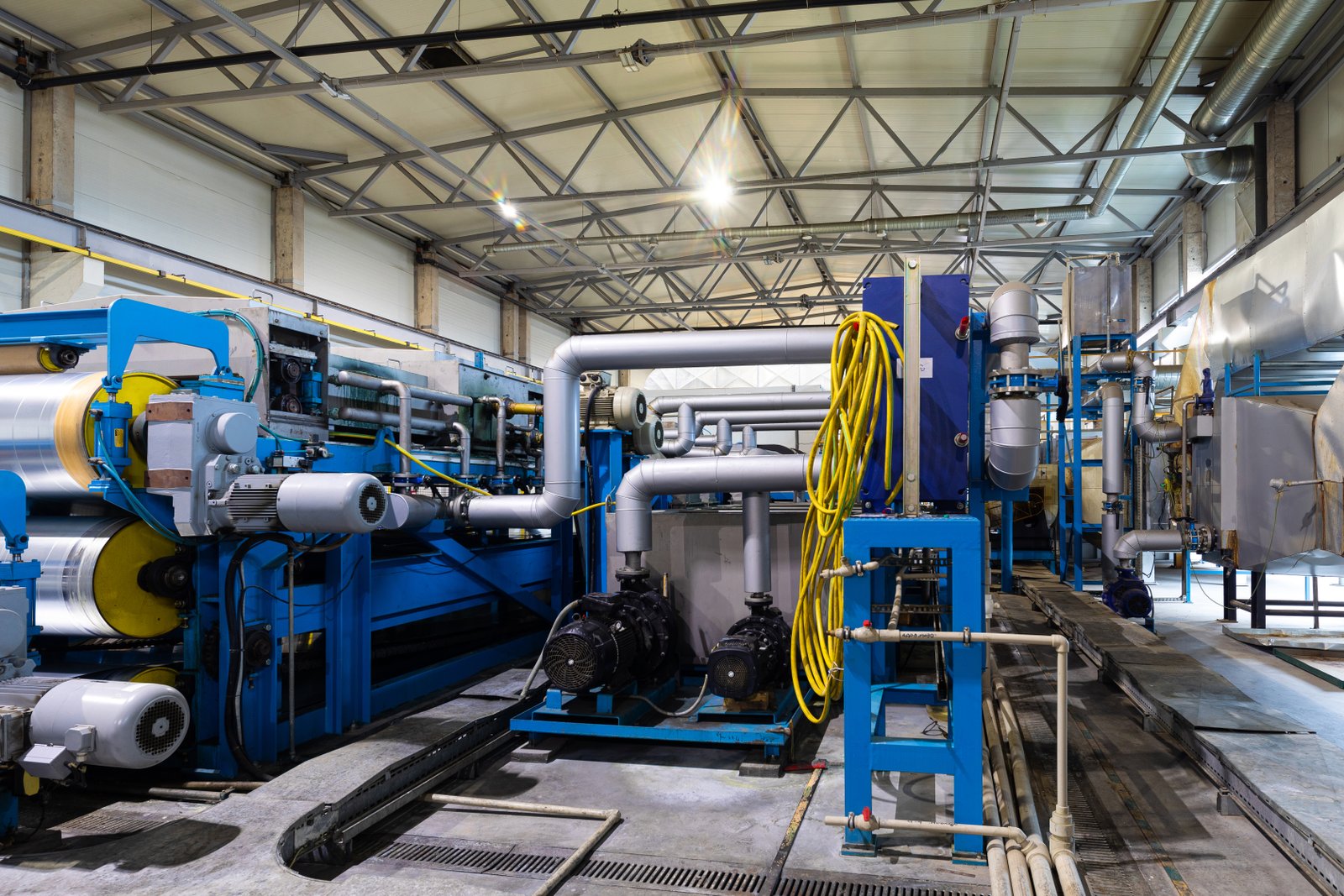
Documentation is the objective evidence of your compliance. In the world of auditing, if it isn't written down, it didn't happen. An auditor cannot take your word for it, no matter how experienced your team is. The challenge is not just in performing the tasks, but in proving you performed them correctly and on time. A meticulous and logical documentation strategy is what separates a smooth, successful audit from a stressful, finding-laden one. It is the tangible proof of your process discipline.
Building Your Audit Command Center: The Documentation Hub
The first step is to establish a single source of truth. This can be a physical set of binders in a secure location or, more efficiently, a dedicated digital folder on a shared network drive. The key is that everyone on the audit team knows where to find every required document. I strongly recommend structuring your hub to mirror the CQI-9 assessment flow. Create top-level folders for "Section 1: Management Responsibility," "Section 2: Floor Responsibility," "Section 3: Equipment (Pyrometry)," and "Section 4: Process Control." This logical structure makes retrieval instantaneous.
Within this hub, version control is critical. A common audit finding is the use of outdated forms or procedures on the shop floor. Your system must have a clear method for archiving old versions and distributing new ones.
A case in point: we once assisted a mid-sized metal stamping company that was preparing for their first Tier 1 automotive audit. They had documents scattered across three different departments' local drives. It took us two full days just to collect and verify the current versions of everything. We helped them build a centralized SharePoint site where all documents were stored, with clear ownership and review dates assigned to each one. This "command center" not only streamlined their audit preparation but also improved their day-to-day operational efficiency.
The Heart of the Matter: Pyrometry and Equipment Records (AMS 2750)
This section of your documentation hub is the most scrutinized. It is where you prove your compliance with AMS 27503. You must have immaculate, easily accessible records for every piece of equipment in your thermal processing system. The auditor will ask to see these almost immediately. There should be a dedicated sub-folder for each furnace.
Inside each furnace's folder, you need records for:
- Temperature Uniformity Surveys (TUS): The full, detailed report, including the raw data, thermocouple correction factors, a diagram of the test locations, and a clear pass/fail statement signed by a qualified person.
- System Accuracy Tests (SAT): Logs of every SAT performed. This log should include the date, the furnace zone tested, the "as found" and "as left" readings, the identification of the test instrument used, and the technician's signature.
- Instrument Calibrations: Current, valid calibration certificates for every single instrument in the system: controllers, recorders, and the portable instruments used for SATs. These must be traceable to national standards (like NIST in the US).
- Thermocouple Management: Records of every thermocouple—both controlling and recording—showing its type, date of installation, and date of its last replacement or calibration check, adhering to the lifespan limits defined in AMS 2750.
I recall an audit where a client producing stainless steel wire had perfect TUS reports but failed to maintain a log of their SATs. They had been performing them but hadn't documented them consistently. This resulted in a major non-conformance. Documentation is not optional; it is the deliverable.
Demonstrating Control: Process and Personnel Documentation (CQI-9)
While AMS 2750 focuses on the equipment, the rest of CQI-9 focuses on how you manage the process and the people who run it. This documentation proves that you have defined your bright annealing process and that you execute it consistently every single time. It is the evidence of your operational discipline.
Your documentation hub must contain:
- Process Specifications: This is your recipe book. For each part or product family, you need a defined set of parameters: furnace temperature setpoints, atmosphere composition (e.g., %H2, dew point), belt speed, etc. These are often called "Process Control Plans" or "Shop Travelers."
- Completed Job Audits: As required by CQI-9, you need to show completed checklists from your internal job audits. These demonstrate that you are actively verifying that operators are following the specified recipes during production.
- Preventive Maintenance (PM) Records: A complete log of all scheduled and unscheduled maintenance performed on the furnace. This proves you are proactively maintaining your equipment to prevent failures. An auditor will often cross-reference a PM record with a maintenance work order to ensure the system is robust.
- Personnel Training Matrix and Records: You need a matrix showing all heat treat personnel and which tasks they are qualified to perform. This must be backed up by individual training records that show when they were trained and deemed competent.
A client manufacturing fasteners for the export market faced a challenge here. They had skilled, long-term employees but no formal training records. We worked with them to develop a skills matrix and a simple on-the-job training checklist. By formalizing and documenting the training that was already happening informally, they were able to meet the CQI-9 requirement and demonstrate the competence of their workforce to the auditor.
Documentation proves complianceTrue
Auditors require written records as objective evidence that processes were performed correctly and on time.
Informal training meets CQI-9False
CQI-9 explicitly requires formal documentation of personnel training through matrices and individual records.
What are the key inspection points in bright annealing that need compliance checks?
You have the knowledge and the documents, but where will the auditor look first? Failing to anticipate the critical inspection points during the on-site audit can lead to surprises and non-conformances. The solution is to walk through the process like an auditor yourself, focusing on the high-risk areas.
The key inspection points for a bright annealing audit are the furnace pyrometry system (TUS/SAT compliance), process parameter control (atmosphere, temperature, speed), job traceability from raw material to finished product, and verification of operator competency on the shop floor.
These points form the core of the physical audit. The auditor will spend less time in your office and more time on the production floor, observing your process in action and verifying that your documentation matches reality. I always tell my clients, "The shop floor must tell the same story as your paperwork." For example, the auditor will pick a production job currently running and ask the operator for the process recipe. They will then compare the parameters on the recipe sheet (temperature, atmosphere flow rate, belt speed) to the actual readings on the furnace control panel and the operator's log. Any discrepancy, no matter how small, will be questioned. This is where meticulous operational discipline pays off. It's about ensuring the settings are not just correct but are also being monitored and recorded as your procedures demand. We helped a client implement a simple hourly log sheet for their operators, which became a key piece of evidence during their successful audit.
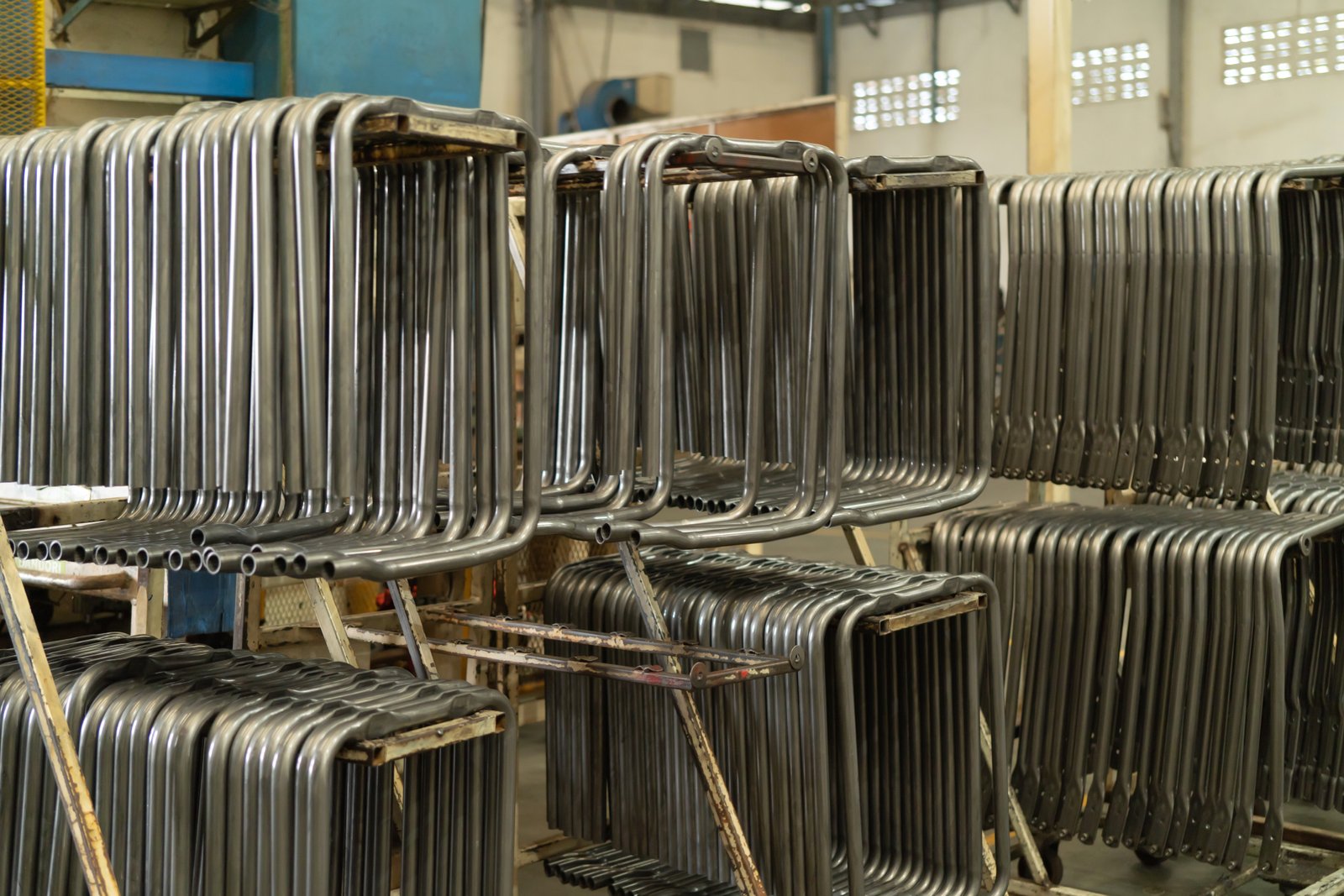
The on-site audit is where theory meets practice. It is a live verification of your entire system's integrity. An auditor is trained to spot inconsistencies between what your procedures say, what your records show, and what is actually happening on the floor. Being prepared for these specific checkpoints is crucial for a smooth and successful assessment. It's about proving that your documented system is a living, breathing part of your daily operations.
The Furnace: Verifying Equipment Capability and Health
The first stop on any auditor's floor walk is always the furnace itself. They will treat it as the heart of the operation and inspect it with a fine-toothed comb. This inspection is not just a visual check; it's a deep dive into its compliance with AMS 2750 and your own internal procedures. The auditor will physically verify that the control, recording, and over-temperature protection instruments match the models and serial numbers listed in your calibration certificates. They will look at the thermocouples to ensure they are the correct type (e.g., Type N for high-temperature bright annealing) and that they appear to be in good condition.
They will then connect this physical hardware back to your documentation. They will ask for the most recent TUS report and verify that the furnace is operating within its qualified work zone and temperature class. For instance, if your TUS qualifies a work zone of a specific length and height, they will check that the parts currently being processed are placed within those boundaries.
A memorable case involved a client who had an immaculate TUS report for their AKS mesh belt furnace. However, during the audit, the auditor noticed the operator had loaded parts that were slightly too tall, exceeding the qualified vertical work zone from the TUS. This was an immediate finding. It taught a valuable lesson: TUS isn't just a certificate on the wall; it's a set of operational boundaries that must be respected every single day. We helped them add the work zone dimensions to the operator's work instructions as a permanent corrective action.
The Process: Validating Live Parameters and Controls
Once the equipment's health is verified, the focus shifts to the live process. For bright annealing, this means a critical examination of the two most important parameters: temperature and atmosphere. The auditor will select a running job and ask to see the "recipe" or process specification for that specific part number. They will then perform a real-time check.
First, they'll check the temperature4. They will compare the setpoint on the recipe sheet to the setpoint on the furnace controller, and then to the actual temperature reading on the independent recording device. These must all align within the tolerances specified by your own procedures and AMS 2750. Second, they'll scrutinize the atmosphere. For bright annealing of stainless steel, this is paramount. They will ask to see your procedure for atmosphere control and verification. They will check the flow rates of nitrogen (N2) and hydrogen (H2) on the flowmeters and compare them to the recipe. Crucially, they will ask to see records of dew point or oxygen level analysis, which proves the atmosphere is sufficiently reducing to prevent oxidation.
We had a client who produced bright annealed tubing for medical applications. Their process was excellent, but they only checked the atmosphere dew point at the start of a shift. The auditor pointed out that under CQI-9, for such a critical parameter, a continuous monitoring system or more frequent checks were expected. We helped them integrate an in-line infrared gas analyzer into their AKS furnace control system, which provided continuous readings and data logging, satisfying the auditor and improving their process control.
The Product: Ensuring Traceability and Conformance
An audit trail doesn't end with the process; it follows the product. The auditor needs to see a clear, unbroken chain of evidence that links a specific batch of finished goods back through the entire process to the raw material it came from. This is the ultimate test of your system's integrity. The auditor will likely select a pallet of finished, bright annealed stainless steel coils or parts and ask for the "traveler" or production ticket associated with it.
This traveler should contain all the critical information: the raw material heat number, the date and time it was processed, the furnace it was run in, and the unique production run or lot number. From there, the auditor will ask for the furnace chart recording or data log for that specific time and date. They will verify that the temperatures and atmosphere during that run matched the required recipe. ly, they will ask for the post-processing inspection results for that lot, such as hardness tests, surface roughness measurements, or microstructure analysis, proving the parts met the customer's specification.
A client in India who exports stainless steel strips to Europe faced a major challenge with this. Their traceability system was paper-based and prone to errors. We advised them on implementing a simple barcoding system. A barcode was generated when the raw material was received, and it was scanned at each stage, automatically linking the material to the furnace run data and final inspection results. This not only made their CQI-9 audit incredibly smooth but also dramatically reduced the time needed to investigate any potential quality issues.
Furnace pyrometry is criticalTrue
The furnace pyrometry system (TUS/SAT compliance) is one of the first things auditors check as it directly impacts temperature accuracy and process consistency.
Traceability is optionalFalse
Traceability from raw material to finished product is mandatory, as auditors require an unbroken chain of evidence to verify process compliance.
How to implement corrective actions for identified deficiencies?
Your internal audit revealed a few gaps. Now what? The simple act of finding a problem isn't enough; auditors need to see a robust, documented process for fixing it and preventing its return. Panic or quick fixes often fail to address the underlying issue, leading to repeat findings.
To implement effective corrective actions, you must first perform a thorough root cause analysis (RCA) to understand the true source of the deficiency. Then, develop a documented action plan, implement the changes, and verify that the solution is effective and has been standardized.
This structured approach, often following a Plan-Do-Check-Act (PDCA) cycle5, is what separates world-class manufacturers from the rest. An auditor is more impressed by a well-documented corrective action for a past-tense problem than by a company that claims to have never had any issues. It shows your quality system is alive and capable of self-improvement. I once worked with a client who had a TUS failure. Their initial reaction was to simply replace the thermocouple and re-run the test. When it failed again, they were stuck. We guided them through a 5 Whys analysis. The thermocouple failed because it overheated. Why? Because of a hot spot in the furnace. Why? Because a heating element was malfunctioning. Why? It had degraded prematurely. Why? The wrong element material was used in a previous repair. The root cause wasn't a bad thermocouple; it was an uncontrolled spare parts inventory. The corrective action was to implement a proper parts management system, a much more robust and permanent solution.
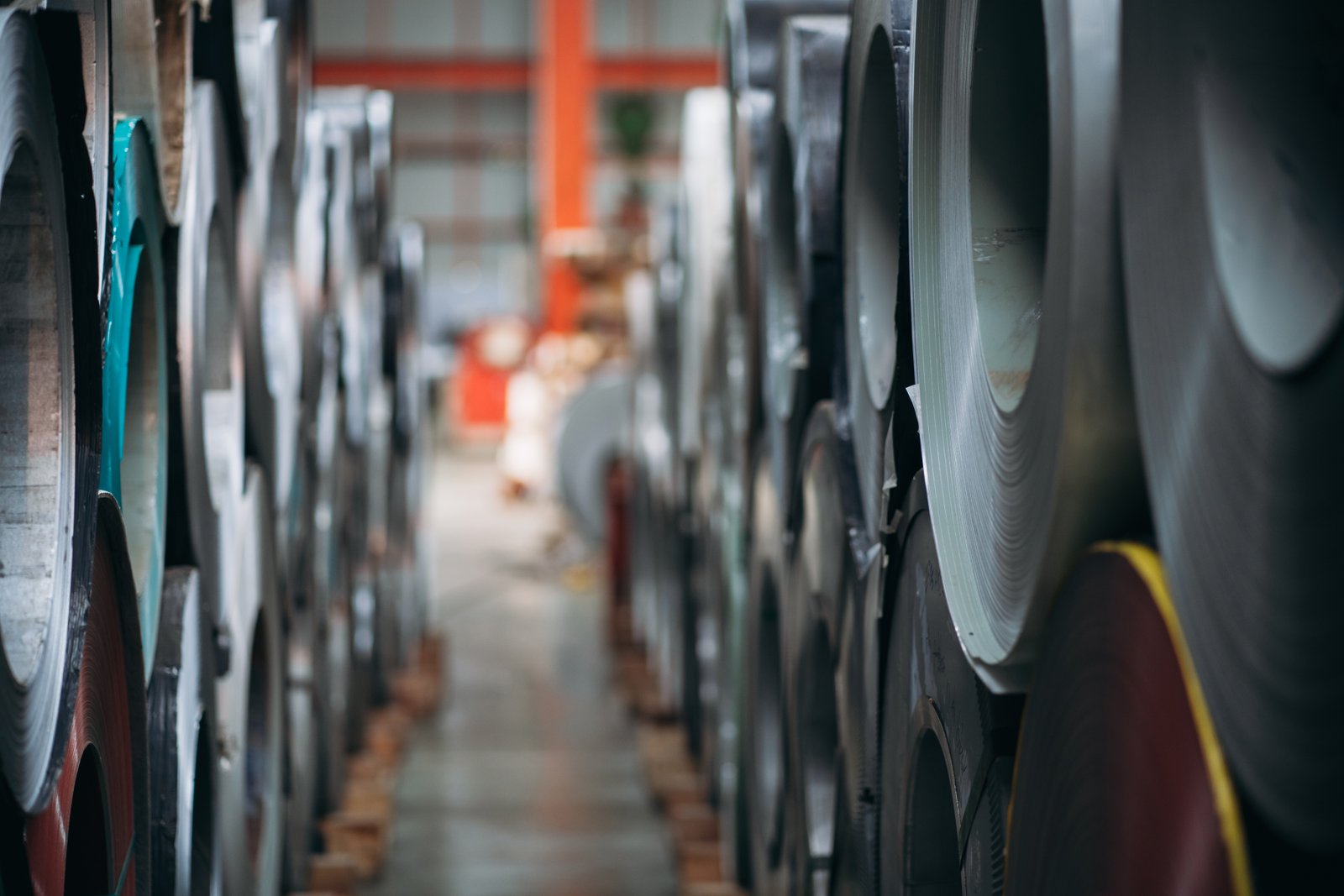
Identifying a deficiency is not a failure; it's an opportunity. The real test is how you respond. A systematic corrective action process demonstrates that your quality management system is mature and focused on genuine, long-term improvement. It transforms problems into documented evidence of your commitment to excellence, which is exactly what an auditor is trained to recognize and value. This is your chance to show you are not just fixing problems, but actively evolving your processes.
Beyond the Symptom: Mastering Root Cause Analysis (RCA)
When a deficiency is found, the most common mistake is to only treat the symptom. For example, if a job audit finds an operator used the wrong temperature setpoint, the simple fix is to retrain the operator. However, this is insufficient. A proper root cause analysis asks why the operator used the wrong setpoint. Was the work instruction unclear? Was the wrong paper attached to the job? Was the controller's interface confusing? Using a structured method like a "5 Whys" or a "Fishbone Diagram" is essential.
Let's break down the "wrong setpoint" issue with the 5 Whys:
- Why did the operator use the wrong setpoint? Because the number on the work instruction was incorrect.
- Why was the number incorrect? Because it was a new part, and the information was transcribed incorrectly from the engineering drawing.
- Why was it transcribed incorrectly? Because the process engineer who created the instruction was rushing to meet a deadline.
- Why were they rushing? Because the new part introduction process doesn't allow enough time for proper verification.
- Why is the process so compressed? Because management has not allocated sufficient resources for process validation.
The root cause is not operator error; it's an inadequate new product introduction process. The corrective action must address this systemic issue, perhaps by implementing a mandatory verification step for all new work instructions. This is the level of depth auditors expect.
From Plan to Proof: The Corrective Action Cycle (PDCA)
Once you've identified the root cause, you need a structured way to implement the solution. The Plan-Do-Check-Act (PDCA) cycle is a perfect framework for this and is highly regarded by auditors. It provides a clear, documented path from problem to resolution.
Plan: Define the problem, the root cause, and the proposed solution. Create a detailed action plan: What tasks are needed? Who is responsible for each task? What is the deadline? For our previous example, the plan would be: "Revise the New Product Introduction procedure to include a mandatory, independent verification of all work instructions before release. Responsibility: Engineering Manager. Deadline: 30 days."
Do: Execute the plan. Implement the changes you've outlined. In our case, this means rewriting the procedure, training the engineers on the new process, and communicating the change to all relevant staff.
Check: This is the critical verification step. You must gather data to prove your solution worked. Did the new procedure prevent transcription errors on the next new part? You could audit the next five new work instructions to verify they are all 100% correct. This objective evidence is crucial.
Act: If the solution was effective, standardize it. Make it the new normal. Update all relevant documentation and training materials. If the solution was not fully effective, you go back to the "Plan" stage to refine it. This continuous loop ensures permanent improvement.
Case Study: Correcting a Bright Annealing Finish Defect
Let's walk through a real-world example from a client of ours who manufactures decorative stainless steel trim6 for the automotive industry. They faced an intermittent issue of slight surface discoloration, which would be a clear audit failure and cause for customer rejection. The symptom was a poor surface finish.
Root Cause Analysis: Initially, they blamed the hydrogen-nitrogen gas quality. However, after installing one of our AKS furnaces equipped with advanced sensors, the data told a different story. The gas quality was stable. Using a fishbone diagram, we investigated further. The "Machine" branch of the diagram led us to the furnace muffle. A detailed inspection during scheduled downtime revealed microscopic cracks in a weld seam near the furnace exit, allowing trace amounts of oxygen to be drawn into the hot zone when the furnace door was opened, contaminating the atmosphere.
Corrective Action Implementation (PDCA):
- Plan: The plan was twofold. The immediate action was to repair the weld using a certified procedure. The systemic, long-term action was to add "muffle integrity pressure testing" to their quarterly preventive maintenance schedule to catch future leaks before they could affect production. Responsibilities and deadlines were assigned.
- Do: The weld was professionally repaired. The PM procedure was officially updated in their document hub, and the maintenance team was trained on the new pressure testing protocol.
- Check: They monitored the surface finish on all subsequent batches for a full month, with zero instances of discoloration. Data from the furnace's oxygen analyzer confirmed a consistently pure atmosphere. This data was saved as objective evidence of the fix's effectiveness.
- Act: The new PM task was made a permanent part of their maintenance system, and the incident was used as a case study in their annual operator training, reinforcing the importance of reporting even minor anomalies. When the auditor later reviewed this record, they were highly impressed with the thoroughness of the response.
RCA precedes corrective actionsTrue
Root cause analysis must be completed before developing corrective actions to address the underlying issue.
Quick fixes solve root causesFalse
Quick fixes often only address symptoms, not the fundamental problem, leading to recurring issues.
What are the final review steps to ensure audit readiness?
You've done the work, but how do you know you're truly ready? Walking into a high-stakes audit with lingering uncertainty is a recipe for stress and potential failure. The only way to achieve confidence is through a rigorous, comprehensive final review process.
The final review steps for audit readiness include conducting a full-scale internal mock audit, holding a formal management review of the findings, and meticulously preparing the audit area and your team for the auditor's visit. This ensures there are no surprises.
This final phase is your dress rehearsal. It’s where you pressure-test your entire system to find any remaining weak points before the external auditor does. A mock audit should be treated with the same seriousness as the real thing. I always recommend having someone lead the mock audit who is not part of the core heat treat team—perhaps a quality manager from another division—to bring a fresh, unbiased perspective. This individual should follow the CQI-9 checklist7 line by line, from the opening meeting to the final report. This practice run builds confidence in your team, refines their ability to answer questions clearly and concisely, and uncovers any last-minute issues, such as a missing calibration certificate or a logbook that hasn't been signed off. It’s the final polish that makes your entire system shine.
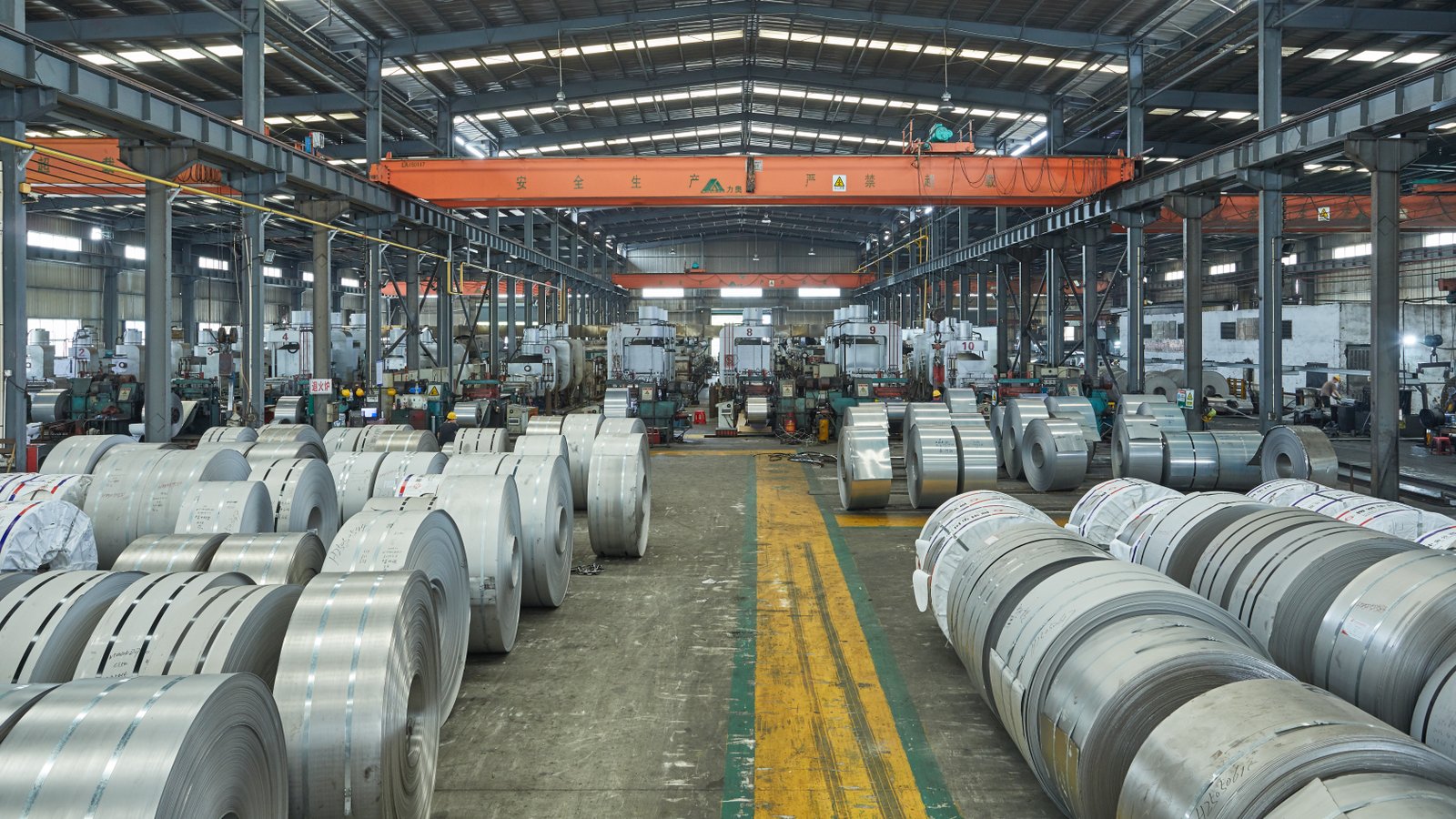
The final days before an audit are not for large-scale changes but for verification, refinement, and preparation. This is your chance to ensure that all your hard work is presented in the most professional and organized manner possible. A confident, well-prepared team and a clean, orderly facility make a powerful first impression on an auditor and set a positive tone for the entire assessment. It demonstrates respect for the process and a deep-seated culture of quality.
The Dress Rehearsal: Conducting a Full-Scale Mock Audit
A mock audit is the ultimate test of your readiness. It should be scheduled at least two to four weeks before the actual audit to allow time for any minor corrective actions. Do not cut corners. The assigned mock auditor should use the exact same AIAG CQI-9 Heat Treat System Assessment checklist8 that the external auditor will use. The audit should simulate the real event in every way possible.
This includes an opening meeting to set the agenda, a thorough documentation review in the office, and an extensive floor audit. The mock auditor should interview operators, question maintenance staff, and ask for specific records on the spot, just as a real auditor would. They should challenge assumptions and ask "show me the evidence" for every claim made. For example, if a procedure says a dew point check is done hourly, the mock auditor should ask to see the logbook and verify the entries for the last 24 hours are complete and within spec.
After the mock audit is complete, the lead should issue a formal report detailing all strengths, weaknesses, and any identified non-conformances (findings). Each finding, no matter how small, should be assigned a corrective action plan. Completing this entire cycle proves your system's resilience and prepares your team for the cadence and intensity of the actual audit.
The Commitment Check: Management Review
CQI-9 places significant emphasis on management responsibility. The auditor needs to see that your leadership team is not just aware of the heat treat operations but is actively involved in ensuring their quality and compliance. One of the most effective ways to demonstrate this is by conducting a formal management review of the mock audit results.
This meeting should involve key leadership figures, such as the Plant Manager, Quality Manager, and Engineering Manager. The agenda should cover the results of the mock audit, the status of all corrective actions, and a final declaration of readiness. The minutes of this meeting become a crucial piece of evidence for the auditor. It shows them that there is top-down commitment to the quality system.
During one client engagement, the management review of the mock audit was a turning point. The review revealed that while the technical aspects were strong, operator training on the "why" behind certain procedures was weak. The Plant Manager, present in the review, immediately approved a budget for enhanced visual training aids to be installed at the furnace stations. The auditor later cited this proactive management involvement as a key strength of their system. It proves that leadership is not just delegating compliance, but enabling it.
Setting the Stage: Preparing Your Team and Facility
The final step is preparing the physical environment and the human element. First impressions matter immensely. A clean, organized, and safe work area immediately tells an auditor that you run a professional operation. This aligns with 5S principles9 (Sort, Set in Order, Shine, Standardize, Sustain), which are themselves a sign of a disciplined manufacturing environment. Ensure all gangways are clear, documentation is neatly stored, and the furnace area is clean and well-lit.
Equally important is preparing your people. Gather everyone who will be involved in the audit, from operators to the quality manager. Briefly review the audit schedule and who will be the primary guide for the auditor. Coach your team on how to interact with the auditor: answer questions honestly and directly, but do not volunteer extra information that wasn't asked for. If they don't know the answer to a question, the correct response is not to guess, but to say, "I don't know the answer to that, but I can find the person who does."
We often run a short pre-audit briefing on the morning of the event. It’s not for training, but to align everyone and calm any nerves. We designate a "runner"—a person whose job is to retrieve any requested documents from the audit hub—so the primary guide never has to leave the auditor's side. These small logistical details create a smooth, professional experience and show the auditor you respect their time and the seriousness of the process.
Mock audits should mirror real auditsTrue
Mock audits should follow the same checklist and procedures as the actual audit to ensure thorough preparation.
Operators should guess answers during auditsFalse
Operators should answer honestly and defer to experts if unsure, rather than guessing.
Conclusion
Successfully navigating a CQI-9 and AMS 2750 audit is a testament to your process discipline. It hinges on systematically understanding the standards, meticulous documentation, verifying key inspection points, robustly correcting deficiencies, and conducting a thorough final review. This ensures compliance and strengthens your quality culture.
-
Learn about the purpose and benefits of using a bright annealing line in industrial processes. ↩
-
Discover best practices for digital CQI-9 checklist management ↩
-
Understand compliance requirements of AMS 2750 for audits ↩
-
Learn techniques for ensuring accurate temperature control in bright annealing processes ↩
-
Learn to apply PDCA for structured problem resolution and continuous improvement ↩
-
Understand common production challenges and solutions for stainless steel automotive components ↩
-
Understand the role and significance of the CQI-9 checklist in audit processes ↩
-
Discover best practices for using the CQI-9 checklist in heat treatment audits ↩
-
Explore how 5S principles improve audit readiness and operational discipline ↩
